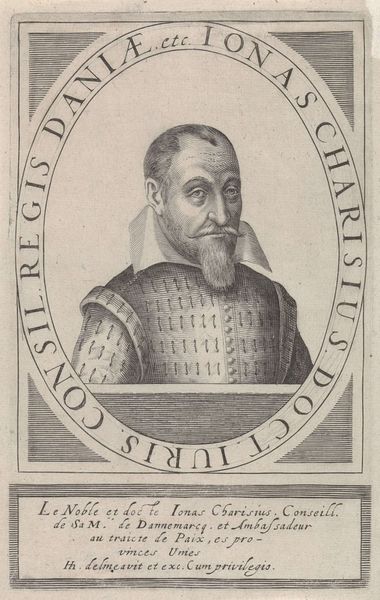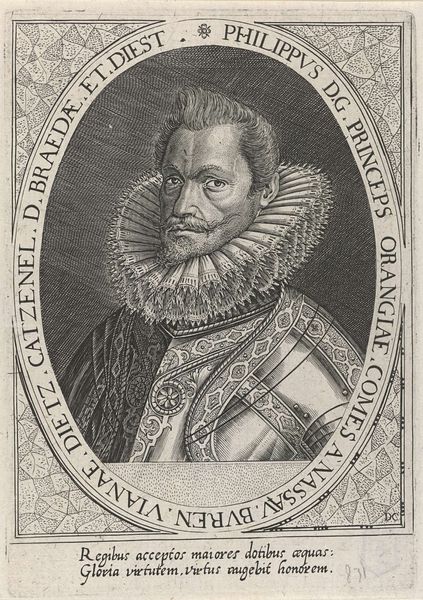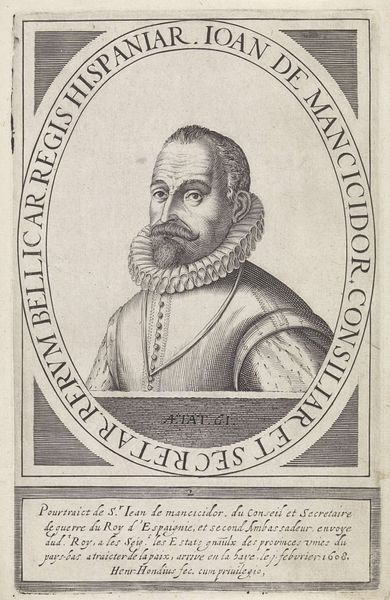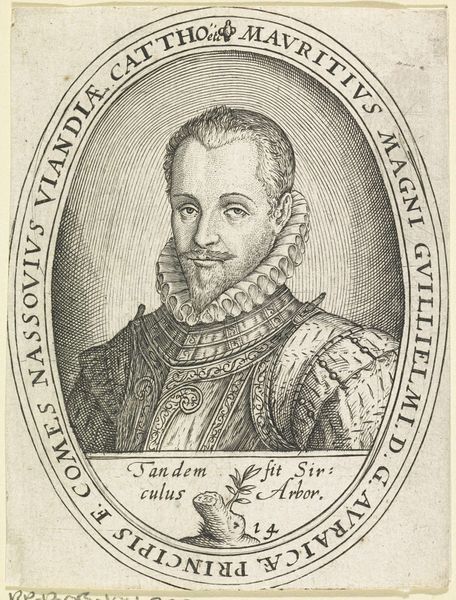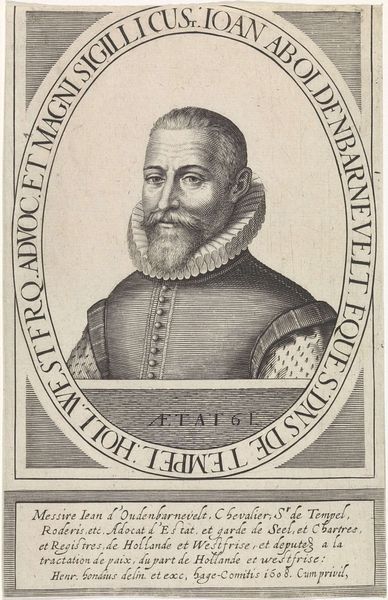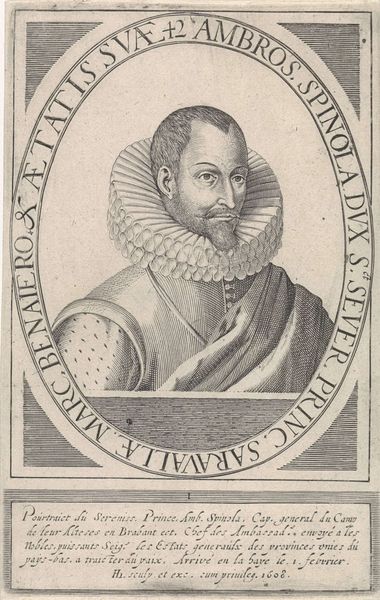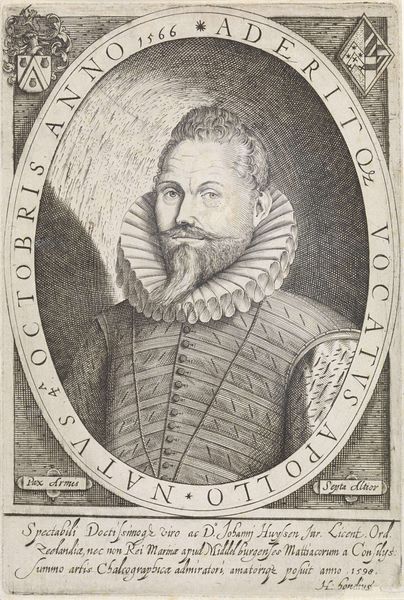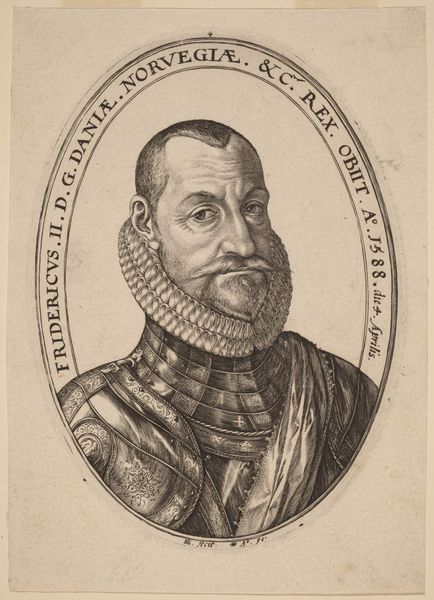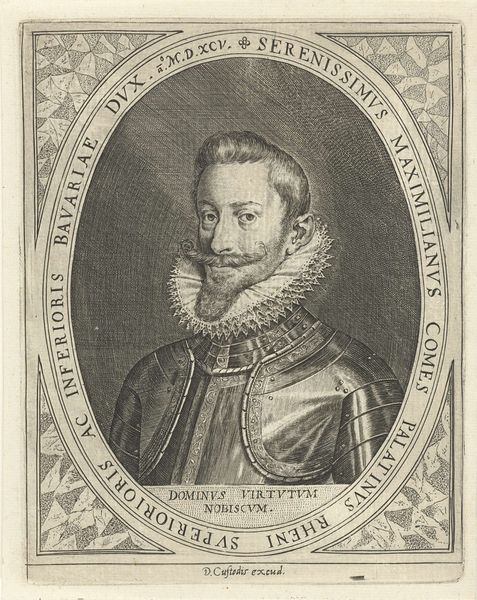
drawing, graphic-art, pen, engraving
#
portrait
#
drawing
#
graphic-art
#
medieval
#
old engraving style
#
figuration
#
form
#
11_renaissance
#
pencil drawing
#
line
#
pen
#
history-painting
#
academic-art
#
engraving
#
historical font
Dimensions: height 151 mm, width 115 mm
Copyright: Rijks Museum: Open Domain
Curator: Here we have an engraving, currently held at the Rijksmuseum, titled "Portret van Willem Lodewijk, graaf van Nassau-Dillenburg," dating from the period 1575 to 1649, but attributed to an anonymous artist. Editor: My first impression is of quiet dignity. The oval frame and tight composition focus attention entirely on the subject's face. It feels reserved yet intimate. Curator: Indeed. Observe how the fine lines create texture, defining the ruff, the beard, and the meticulous detail in the doublet's pattern. Note also the interplay of light and shadow achieved solely through the density and direction of these engraved lines. It’s a remarkable display of formal control. Editor: From a historical perspective, portraits like these served important social and political functions. They were vehicles of power, intended to project status and solidify identity. This Willem Lodewijk was a Stadtholder, after all; this image may well have been circulated to enhance his authority and promote loyalty. Curator: Absolutely. The text encircling the portrait, a carefully chosen font, reinforces this intended image. Notice how it guides the eye back to the sitter’s face, locking in the gaze. We see compositional strategies mirroring socio-political ambitions. Editor: I wonder about the anonymous artist, too. Was their anonymity a result of being commissioned by Willem Lodewijk and serving only as a tool of the state or were they intentionally removed from the final image to allow the Stadtholder’s figure to have more power and focus in this graphic representation? Curator: Interesting thought. We can speculate whether such gestures imply self-effacement, creative subservience, or a subtle act of authorial delegation. Regardless, what impresses most is the artist's command of line and form. It provides structure, not just representation. Editor: The Rijksmuseum holding onto a graphic portrait from that era underscores the lasting importance of Willem's history and our on-going need to view such graphic images through a social and political lens. Curator: A precise summary. It's a valuable example of the union between art and historical importance to be reflected upon today.
Comments
No comments
Be the first to comment and join the conversation on the ultimate creative platform.
